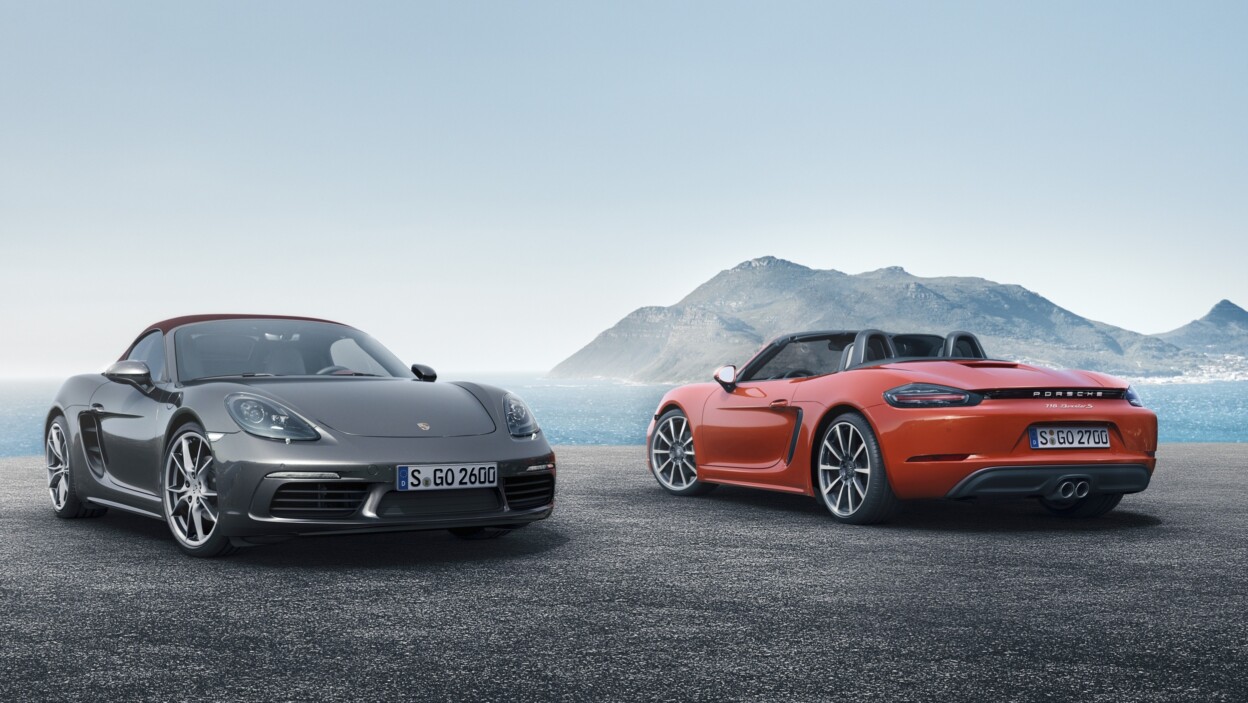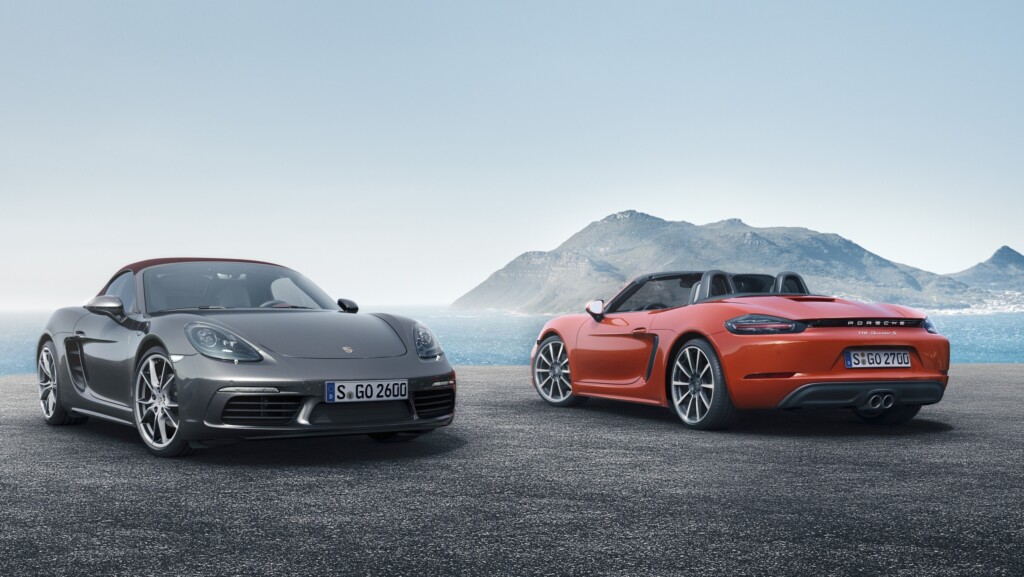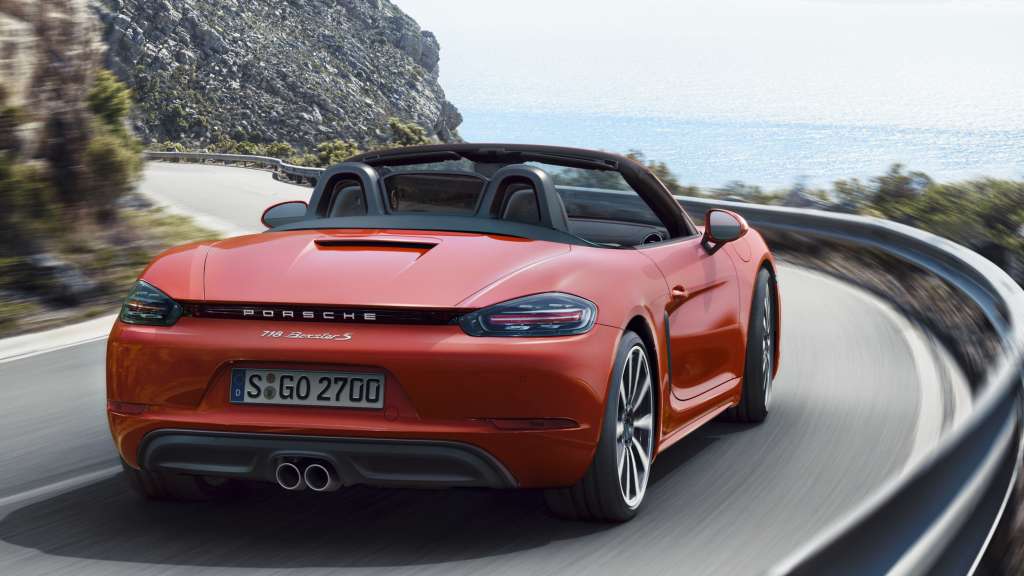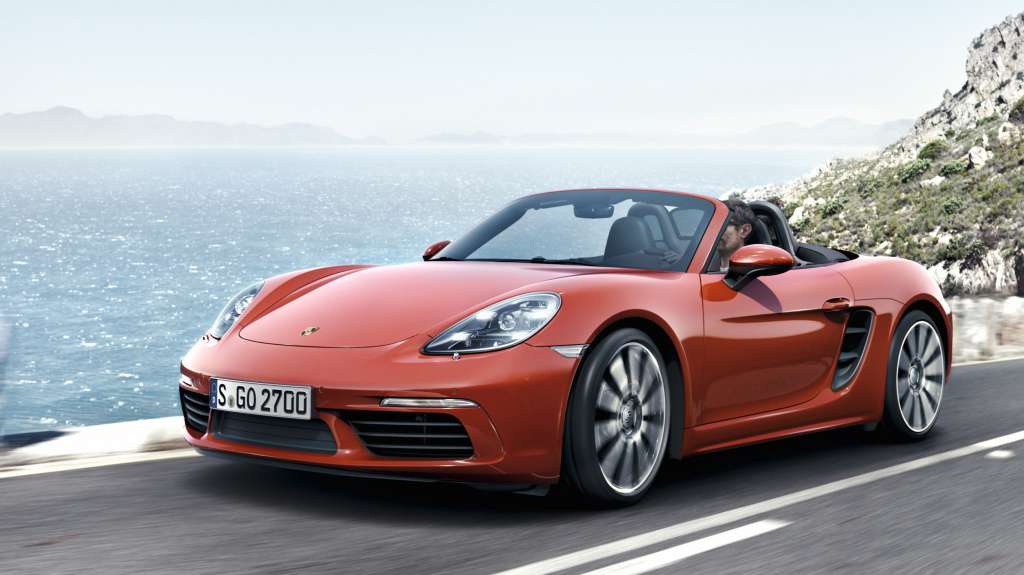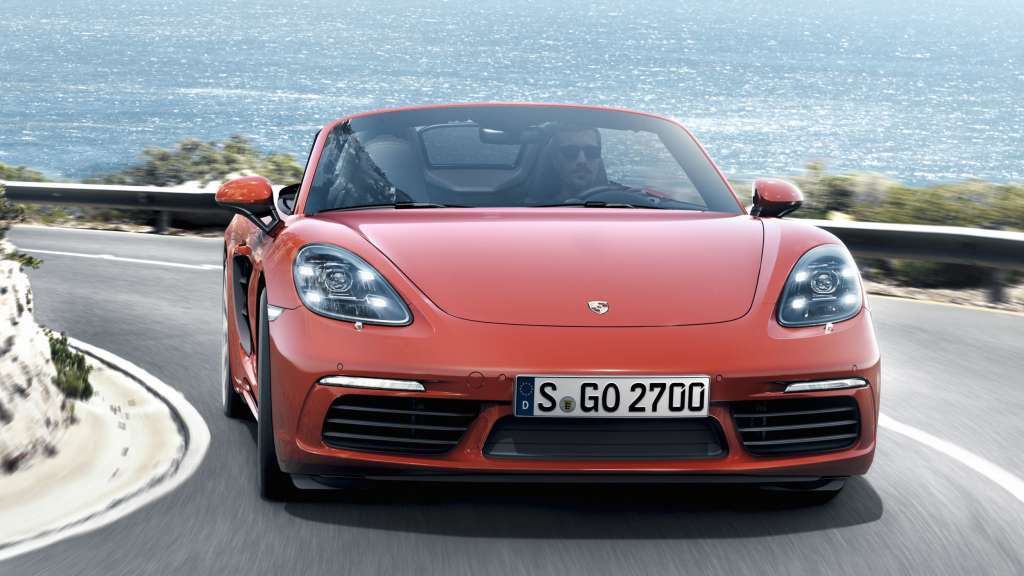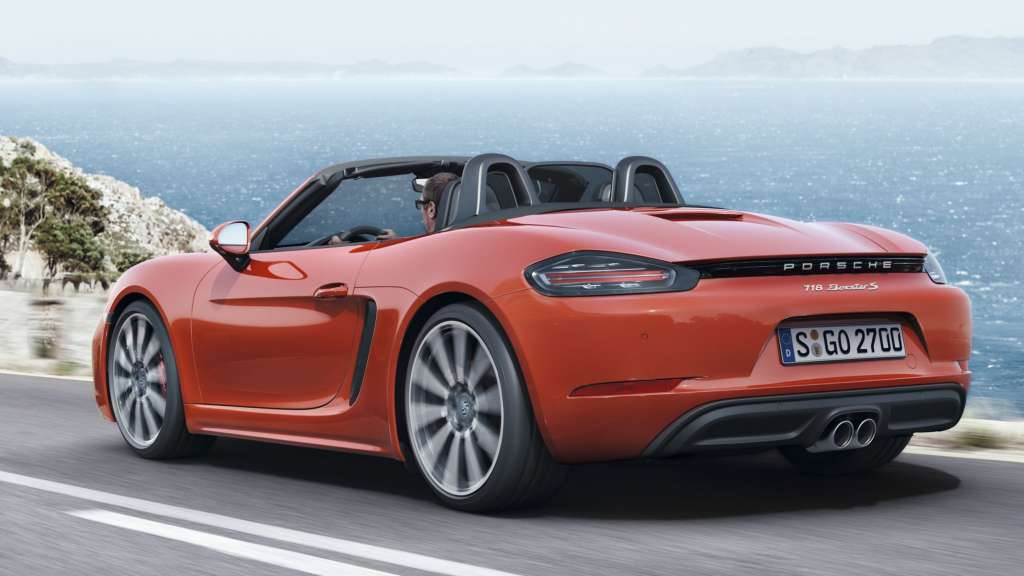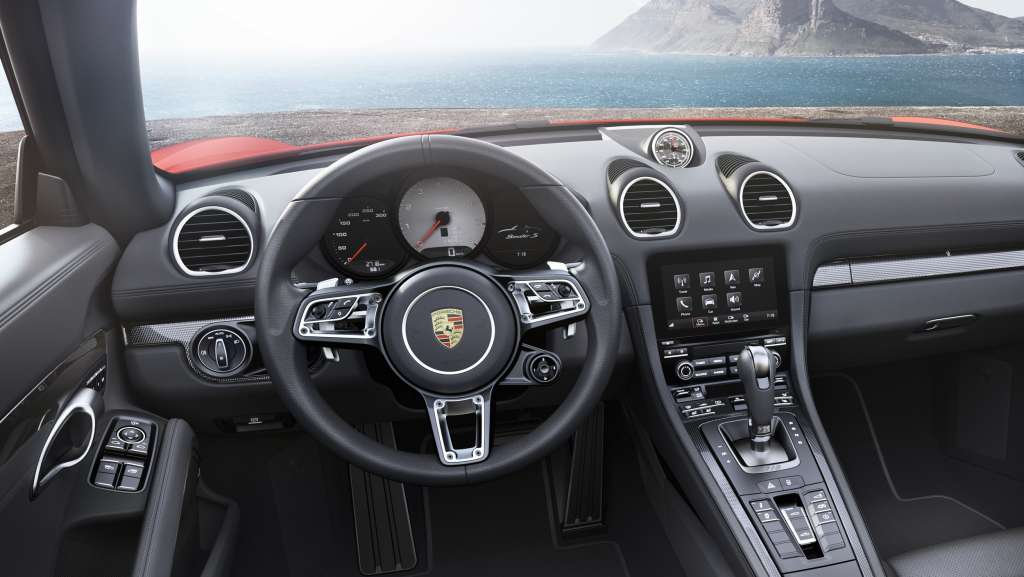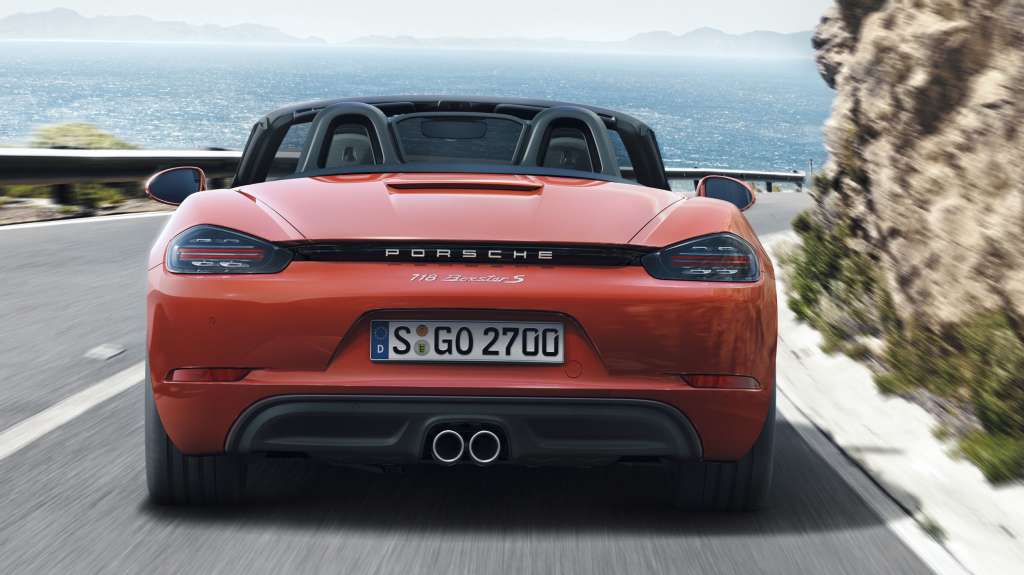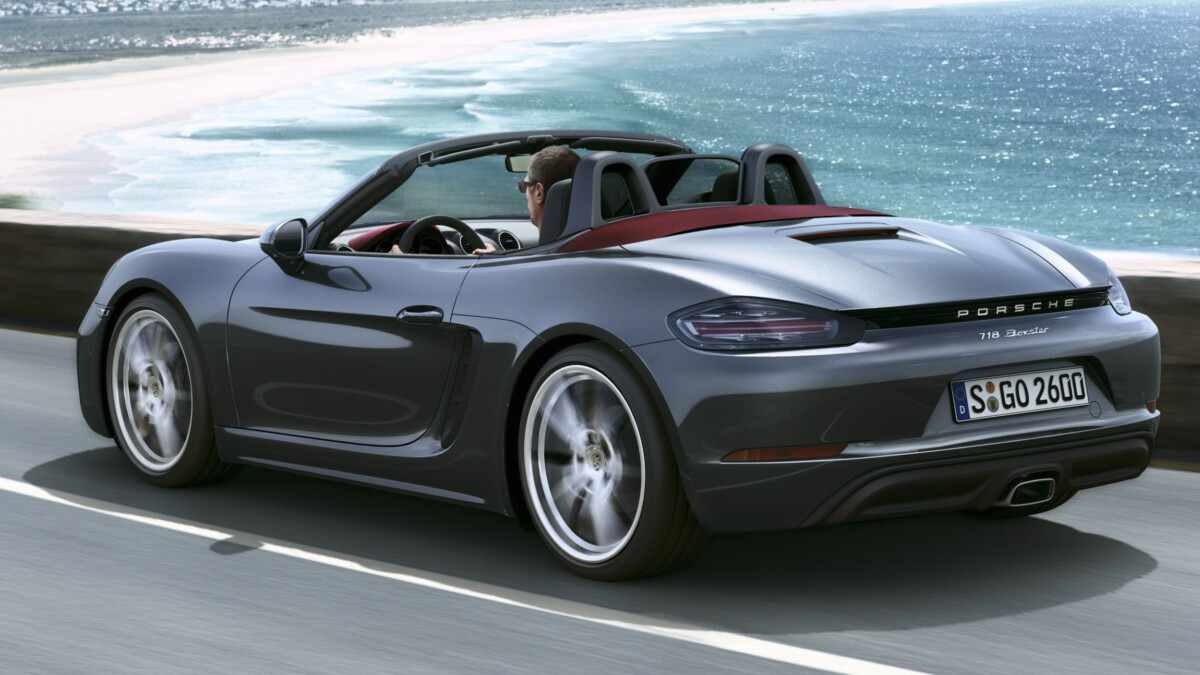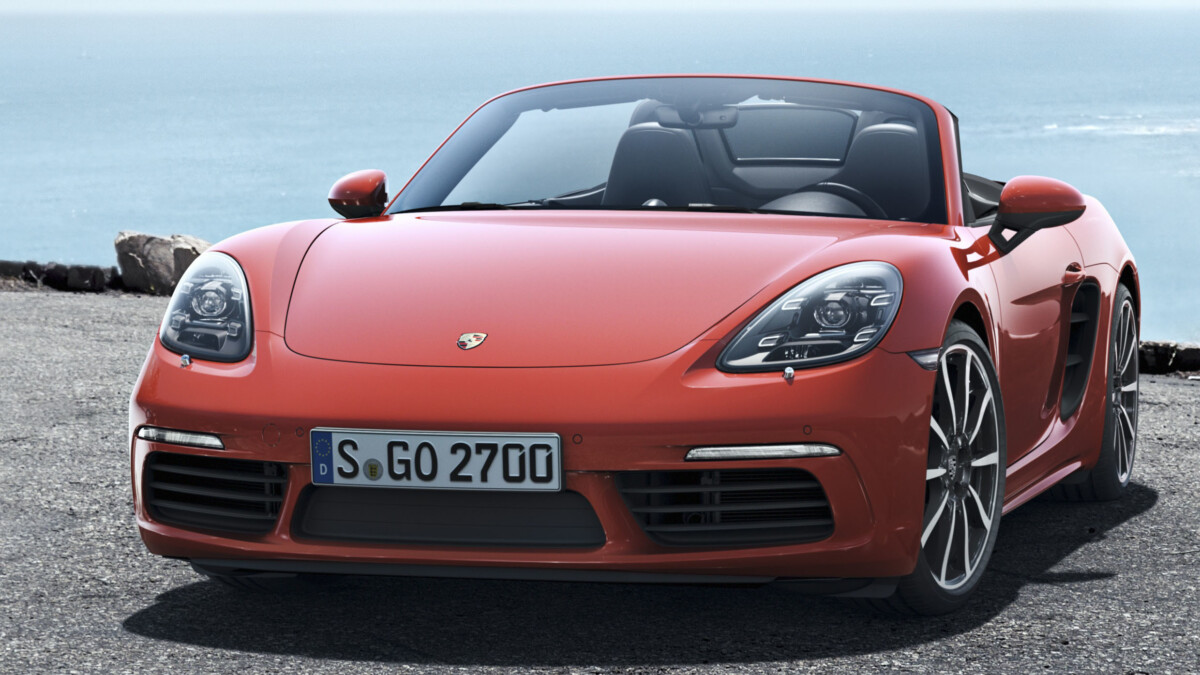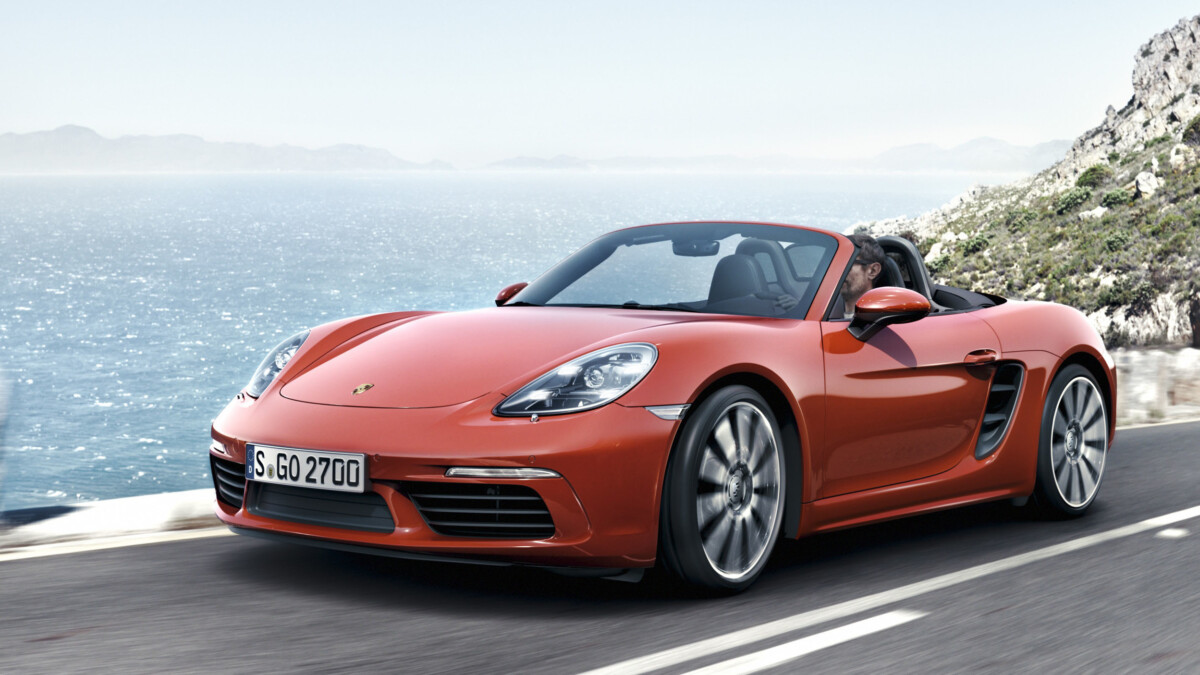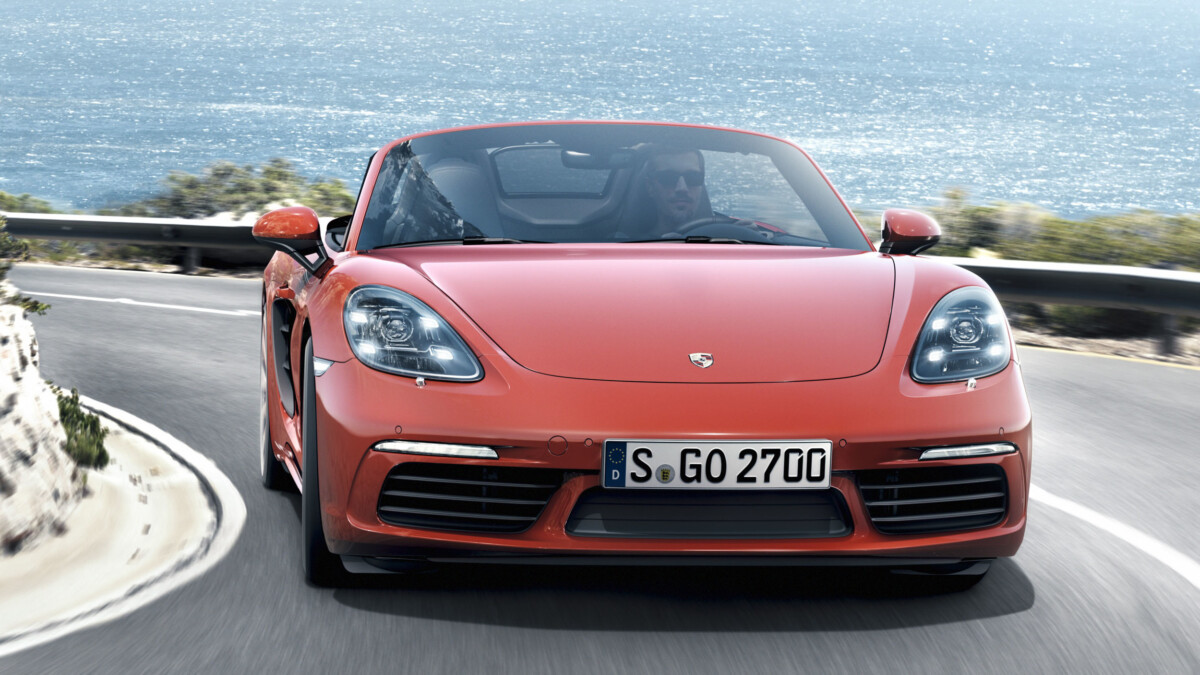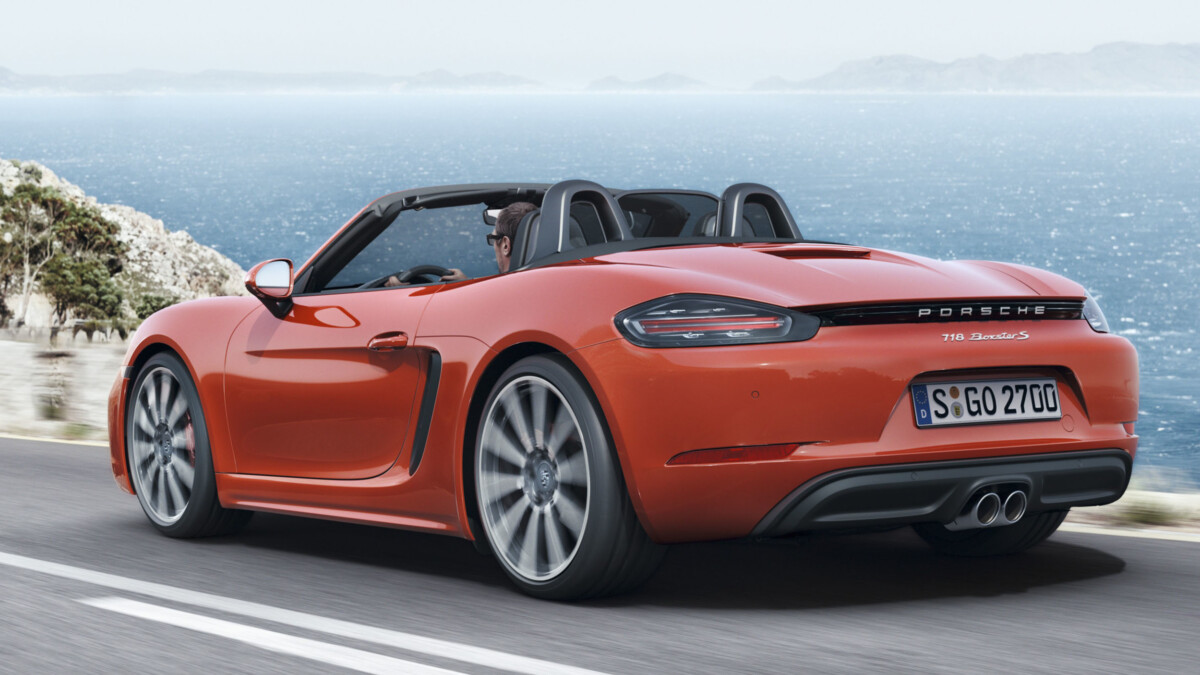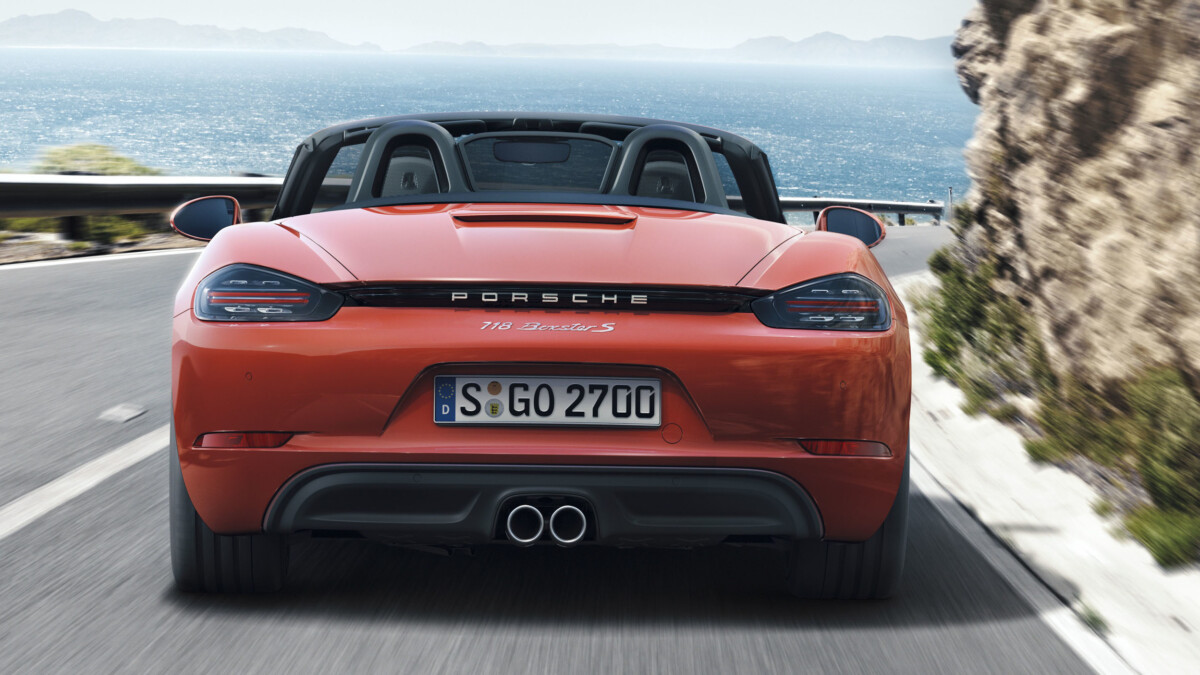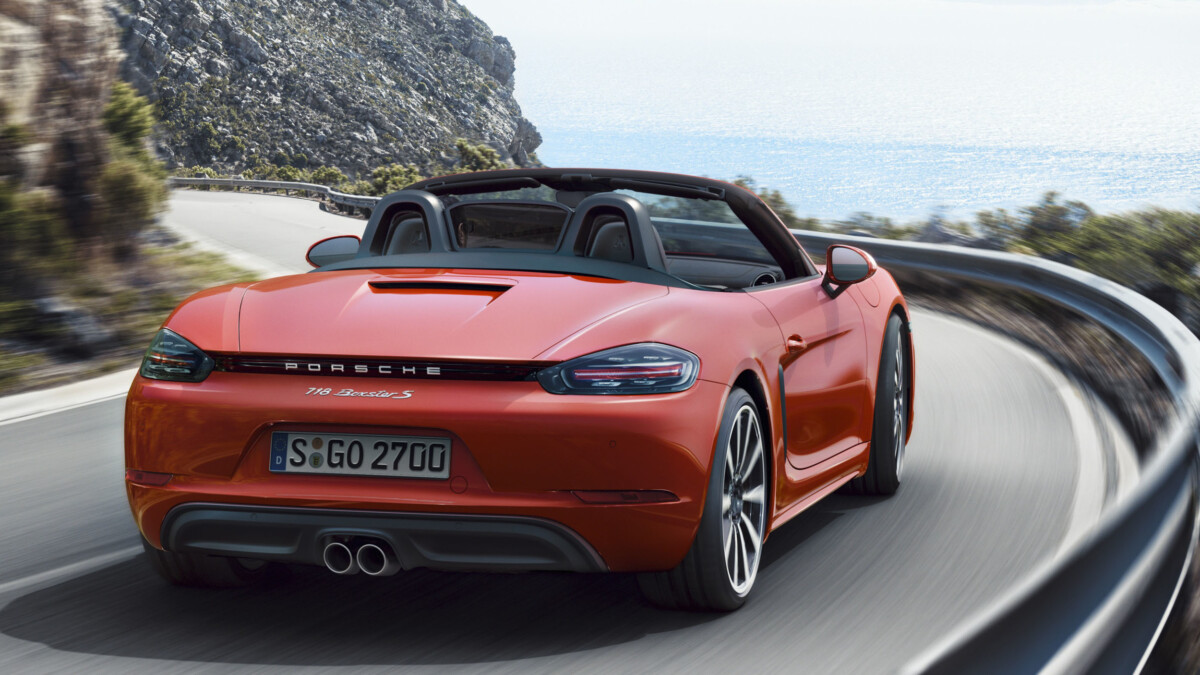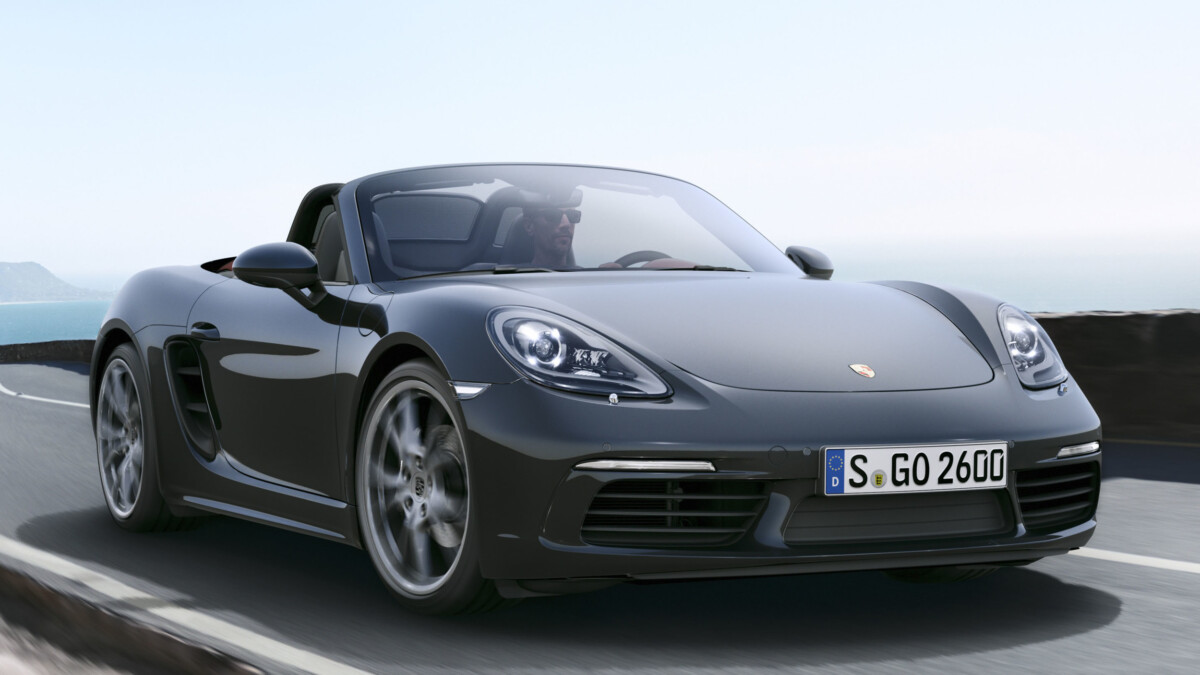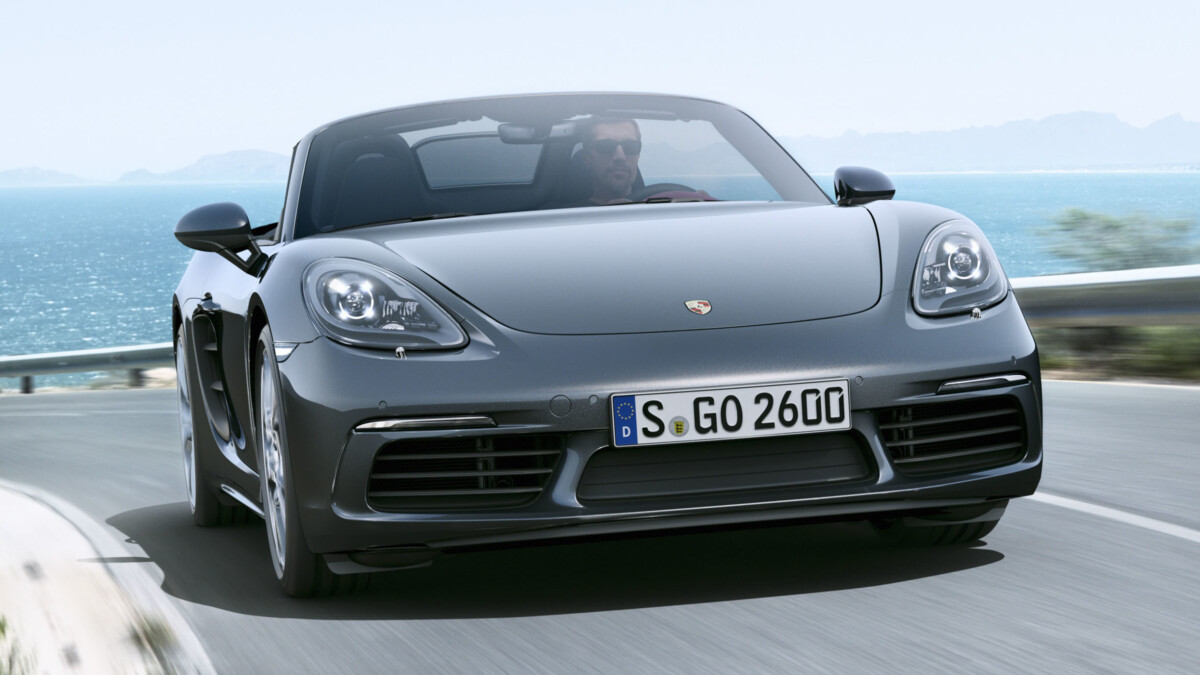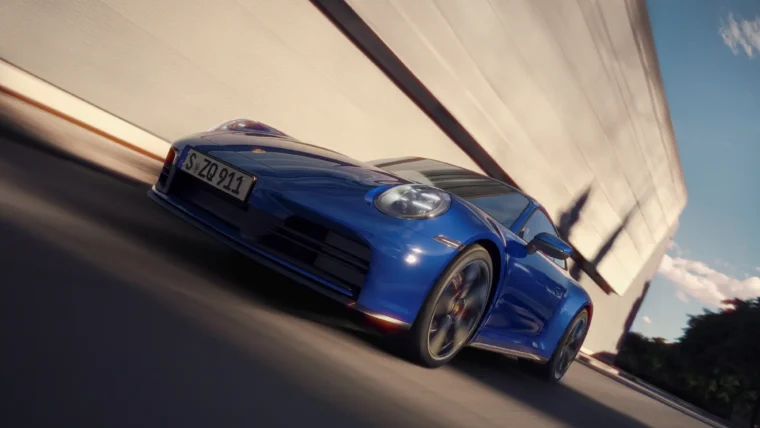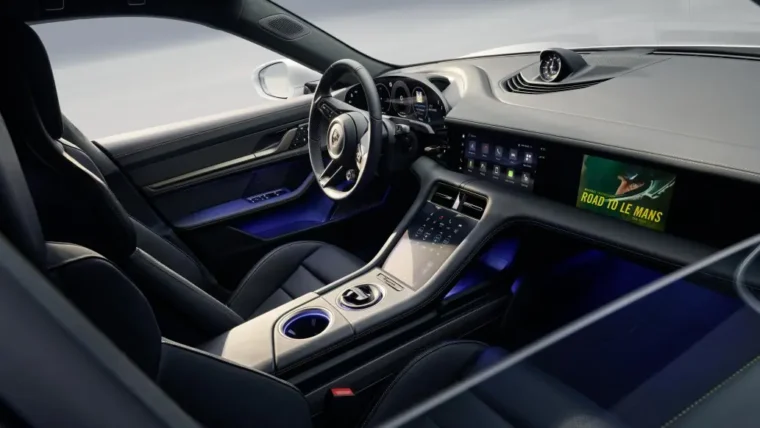Here you have it folks, Porsche has just taken the wraps off the new Boxster and Boxster S with 718 appended to their badges, in honour of their famous mid-engined racecar of the 1950s and ’60s.
The two-seat convertibles are now more powerful yet more fuel-efficient. With them, Porsche continues to use the 4-cylinder flat engines that were used in the Porsche 718 mid-engine sports cars that won numerous races back in the 1950s and 1960s, among them being the legendary Targa Florio and Le Mans.
In terms of its overall looks, the front end of the new roadster has a wider and more masculine appearance. The much larger cooling air intakes at the front are a distinct exterior expression of the new turbo engine concept. The front end of the 718 Boxster is rounded out by the new design of the bi-xenon headlights with integrated LED daytime running lights. LED headlights with four-point daytime running lights are available as a new option.
From a side view, identifying features of the new model line include new, independently styled wings and side sills. Larger air inlet panels with two fins emphasise the car’s dynamic look. The doors are now designed without door handle recess covers. New 19-inch wheels are standard on the 718 Boxster S, while 20-inch diameter wheels are available as an option.
The redesigned rear body of the 718 Boxster has a much wider look – especially due to the accent strip with integrated Porsche badge between the tail lights. The entirely redeveloped tail lights are distinguished by their three-dimensional LED technology and four-point brake lights.
The main highlights of the new model series is the newly developed 4-cylinder flat engine with turbocharging. The 718 Boxster develops 300hp (+35hp) and 380Nm of torque (+100Nm) from 2.0-litres of engine displacement, while the 718 Boxster S attains 350hp and 420Nm of torque (+60Nm) from 2.5-litres of displacement.
Thus, the new 718 Boxster models sprint even faster. The 718 Boxster – with PDK and the Sport Chrono Package – sprints from zero to 100 km/h in 4.7 seconds (0.8 seconds faster). The 718 Boxster S with the same equipment completes this discipline in 4.2 seconds (0.6 seconds faster). The top speed of the 718 Boxster is 275 km/h, and the 718 Boxster S has a top speed of 285 km/h.
The Porsche turbo concept is boosting driving performance while improving fuel economy. In the 718 Boxster, the 4-cylinder flat engine with PDK has a NEDC fuel consumption figure of 6.9 l/100 km (1.0 l/100 km less). In the 718 Boxster S, the 2.5-litre turbo flat engine with PDK consumes just 7.3 l/100 km (0.9 l/100 km less).
The 718 models come with a 6-speed manual transmission as standard. The Porsche Doppelkupplungsgetriebe (PDK), which now features fuel-saving virtual gears, is available as an option.
In its driving dynamics, the new roadster follows in the tracks of the original 718. The car’s completely retuned chassis enhances cornering performance. The electromechanical steering system is configured to be 10% more direct. This makes the 718 Boxster even more agile and easier to steer, both on circuit tracks and in everyday traffic.
Available at extra charge for the roadsters is Porsche Active Suspension Management (PASM) with a 10 mm lower ride height. For the first time, the PASM sport chassis with a 20 mm lower ride height is available as an option for the 718 Boxster S. The active chassis, which has also been retuned, offers an even broader spread between long-distance touring comfort and dynamic sporty stiffness.
As in the 911, the optional Sport Chrono Package now comprises the Individual programme in addition to the three settings Normal, Sport and Sport Plus. In sports cars with PDK, the Sport Response Button has been added, which is located at the middle of the driving programme switch. Inspired by car racing, it enables the driver to configure the responsiveness of the engine and the PDK to be very direct.
Awaiting the driver in the cockpit of the 718 Boxster is the familiar Porsche interior environment, now upgraded with new elements such as the instrument panel. Another central element of the new interior layout is the Porsche Communication Management (PCM) unit with mobile phone preparation, audio interfaces and the Sound Package Plus with 110 watts of audio power. The PCM can be extended with optional modules to thoroughly adapt it to personal requirements. For instance, the navigation module with voice control is available, which makes it easy to input driving destinations. In addition, the Connect Plus module is available as an extension of the navigation module; it provides extended online services.
The market launch of the new mid-engine sports car will begin on April 30 in Europe with the 718 Boxster pricing starts at 53,646 euros and the 718 Boxster S from 66,141 euros.
Other posts by AF Newsdesk

